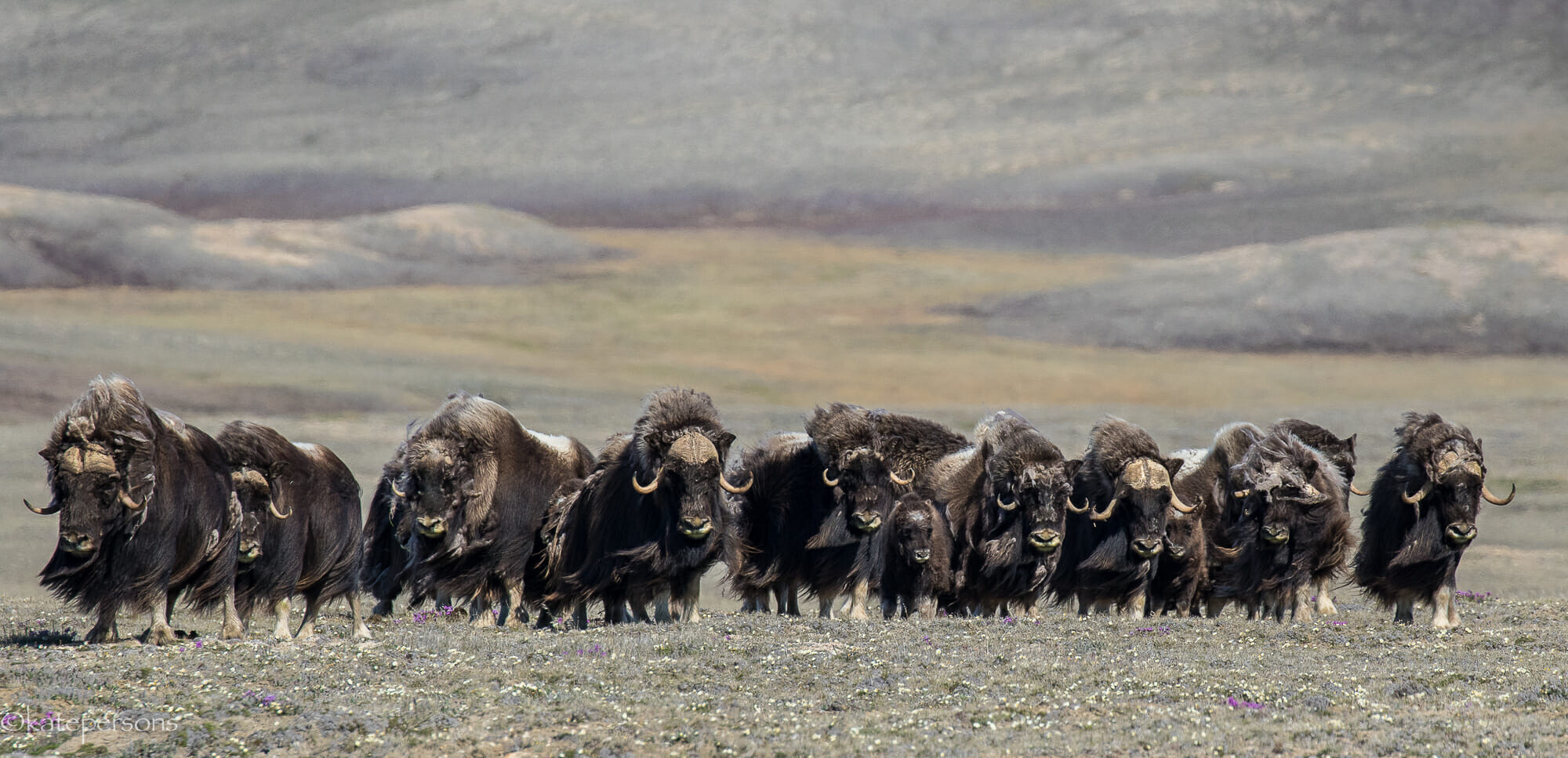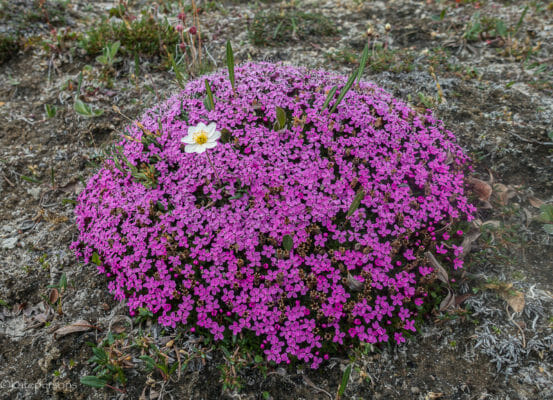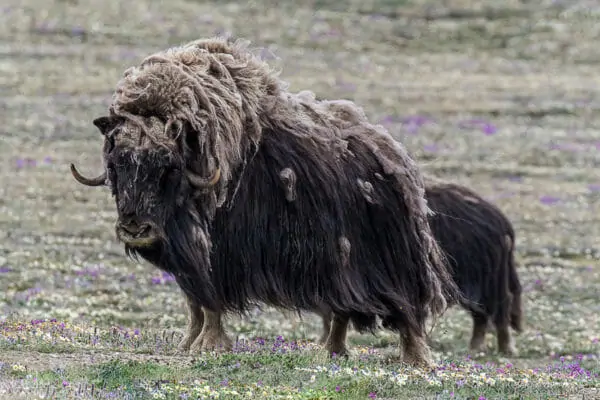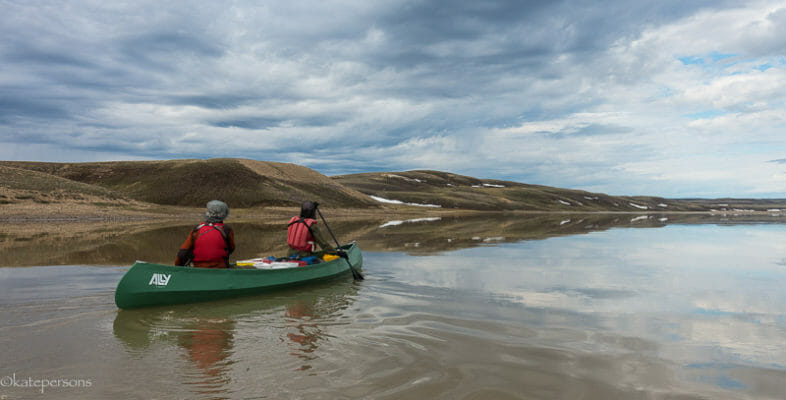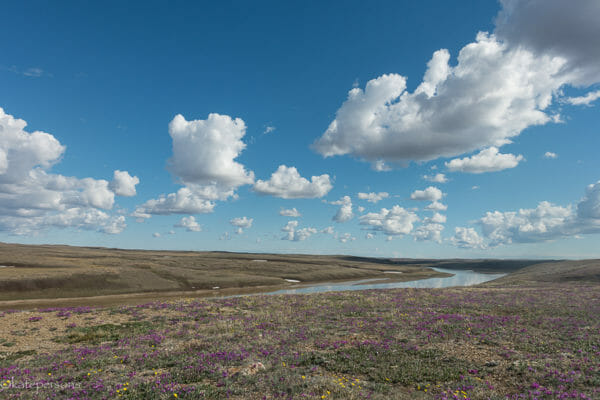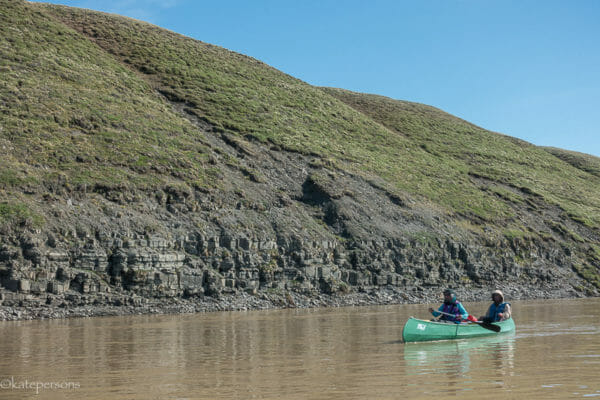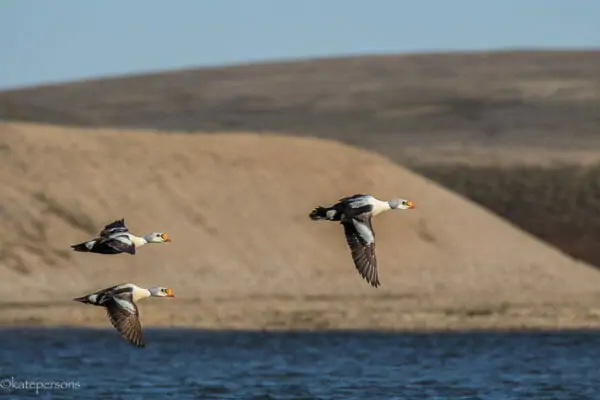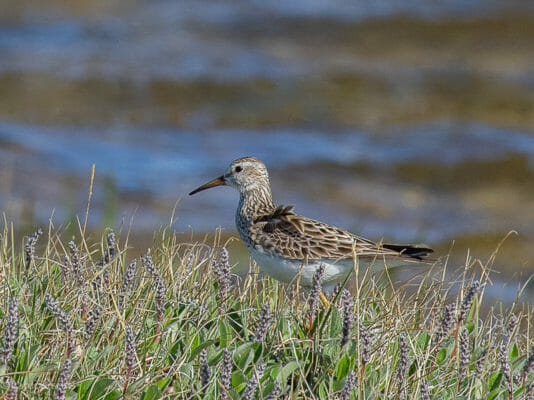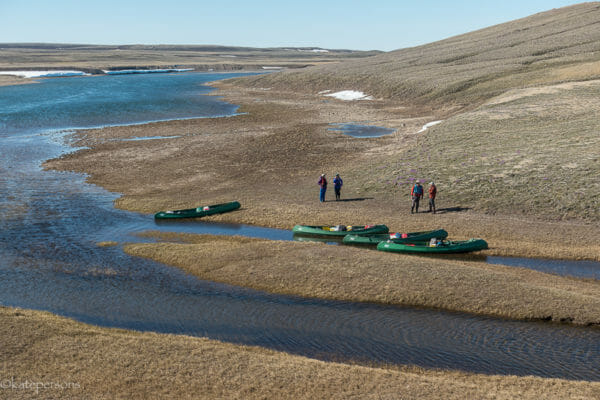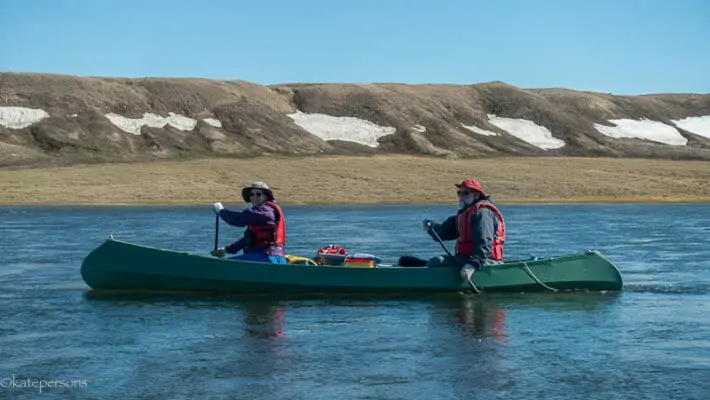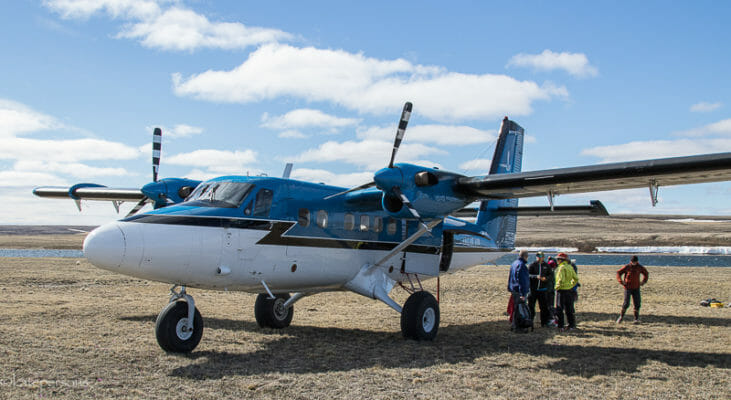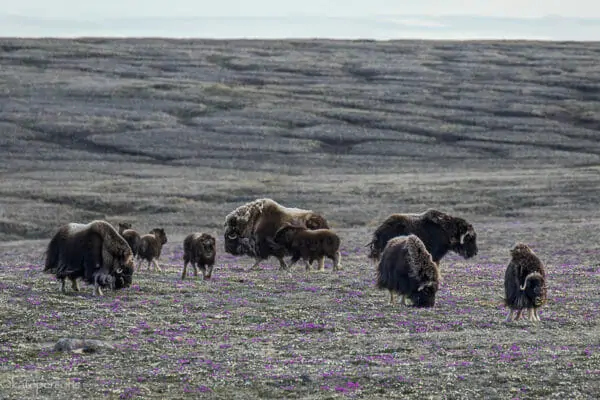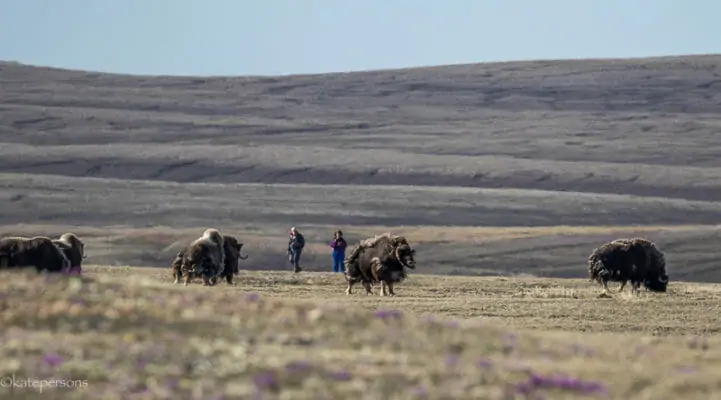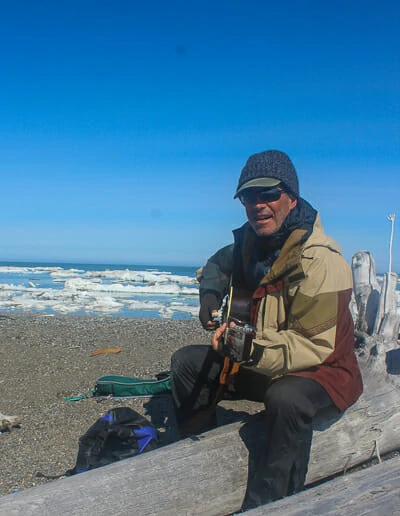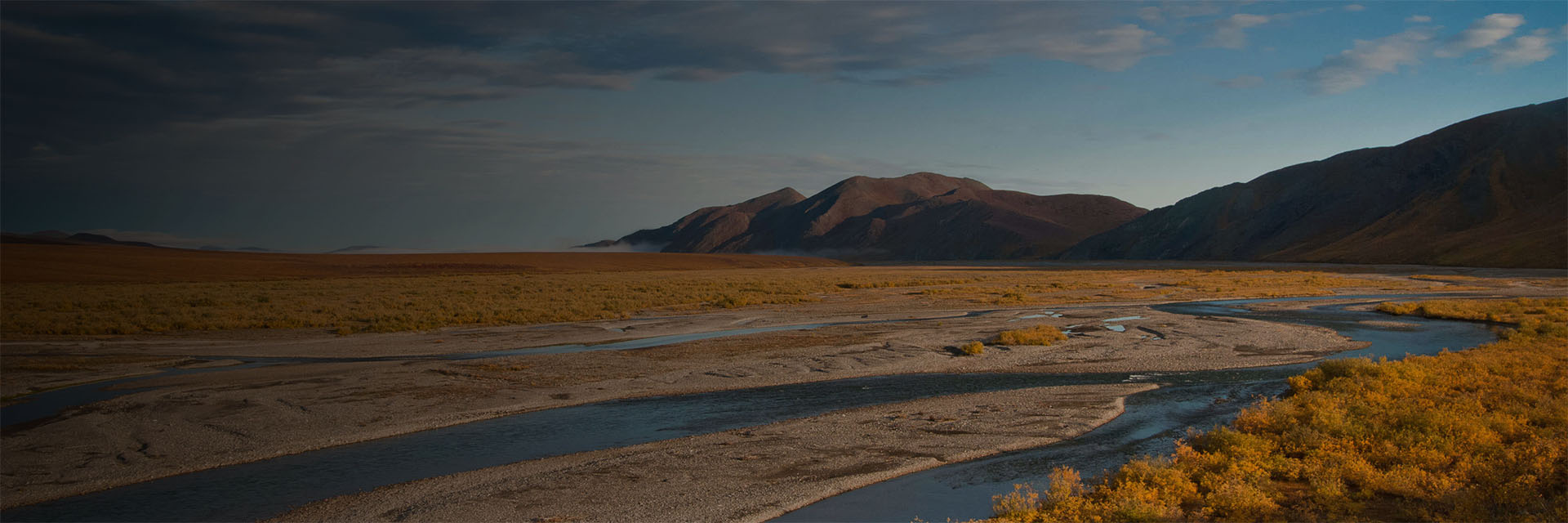Last updated: January 10, 2024
Itinerary
What follows is a general flow of events. Expect the unexpected and prepare to be flexible.
June 24
Meet with your guides this evening in Inuvik for a gear check and pre-trip meeting at your hotel.
June 25
Head to the Inuvik airport and begin our journey north of North America. We will charter a twin otter airplane, and weather permitting, after flying north of the Mackenzie River Delta and beyond the Tuktoyuktuk Peninsula we cross the partially frozen Amundsen Gulf before landing on the south end of Banks Island in Sachs Harbor (Population 120) to refuel. We can take a quick walk before flying the final 150 miles to the headwaters of the Thomsen. Once we unload and the plane departs the only sound will be the wind and bird song!
June 26 - 27
We won’t have lost track of time quite yet and the midnight sun won’t have altered our rhythms too much so we will keep a relatively normal schedule and hike during the day, assemble the Ally folding canoes in the evening and sleep during the sunlit “night”.
June 28
A day on the water. Your guides will steer the canoes and you’ll assist in propelling them down the meandering river. Typically we can cover 12 miles with 4 hours of effort which leaves plenty of time to stop to watch wildlife, explore cultural sites, and stretch our legs.
June 29 - 30
Camp #2. If conditions allow we will spend several days in the vicinity of Nasogaluak, a cultural site likely from the late 1800’s when people from Victoria Island frequented the upper Thomsen while traveling to the shipwrecked Mercy to salvage materials. The broad landscape, wildflowers, and (hopefully abundant) wildlife will make this camp a favorite.
July 1
Back on the water for a final day of canoeing. This promises to be a beautiful and relaxing day on the water with lots of colorful bluffs and outstanding wildflowers. Getting from the last camp to Green Cabin should be attainable while leaving plenty of time for exploration and relaxation.
July 2- 3
Two full days to explore from our third and final camp. Several interesting lakes are within hiking distance and broad sandy areas with unique plants. Green Cabin is a great place to spend several days enjoying the solitude and wildness of the high Arctic.
July 4
Our charter is supposed to arrive today and whisk us south back to the busy world of vehicles, internet, and trees. If the weather cooperates the plane will arrive mid-day and we will retrace our path back to Inuvik. It may be a day or more before the plane can come and get us if fog obscures the landing area, but eventually, like it or not, we will fly away from Aulavik National Park, no doubt changed by the experience.




